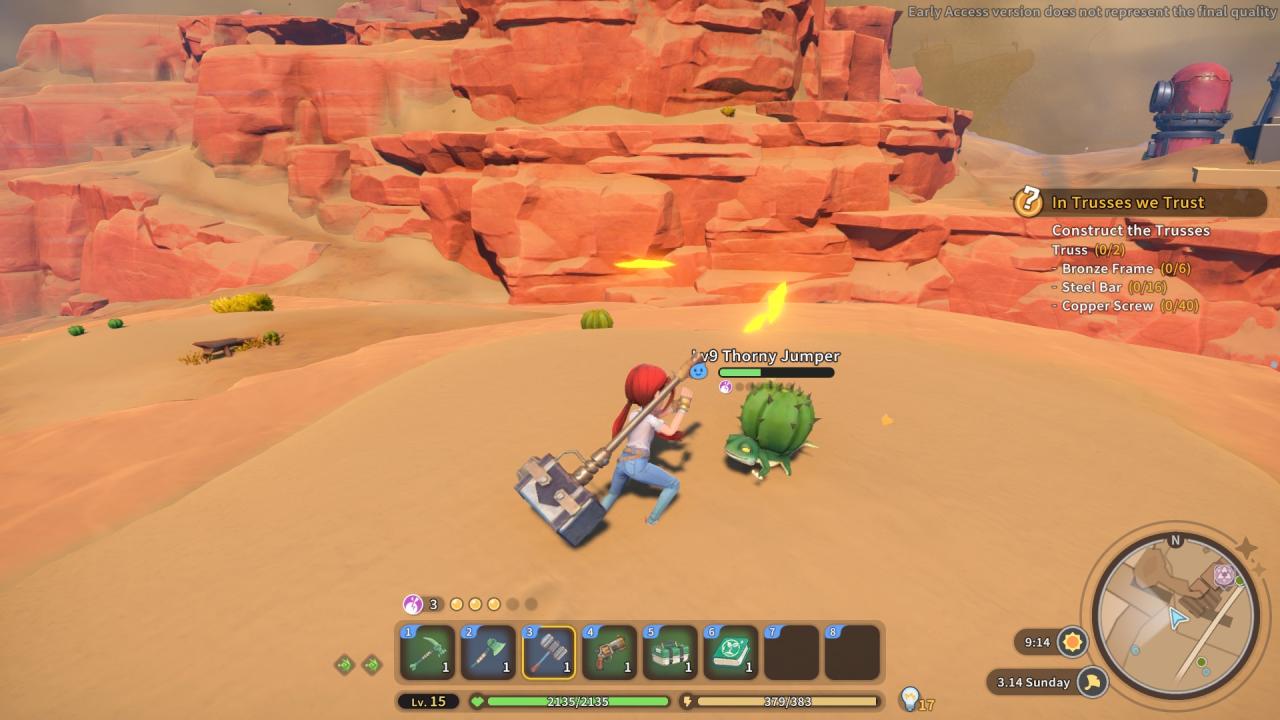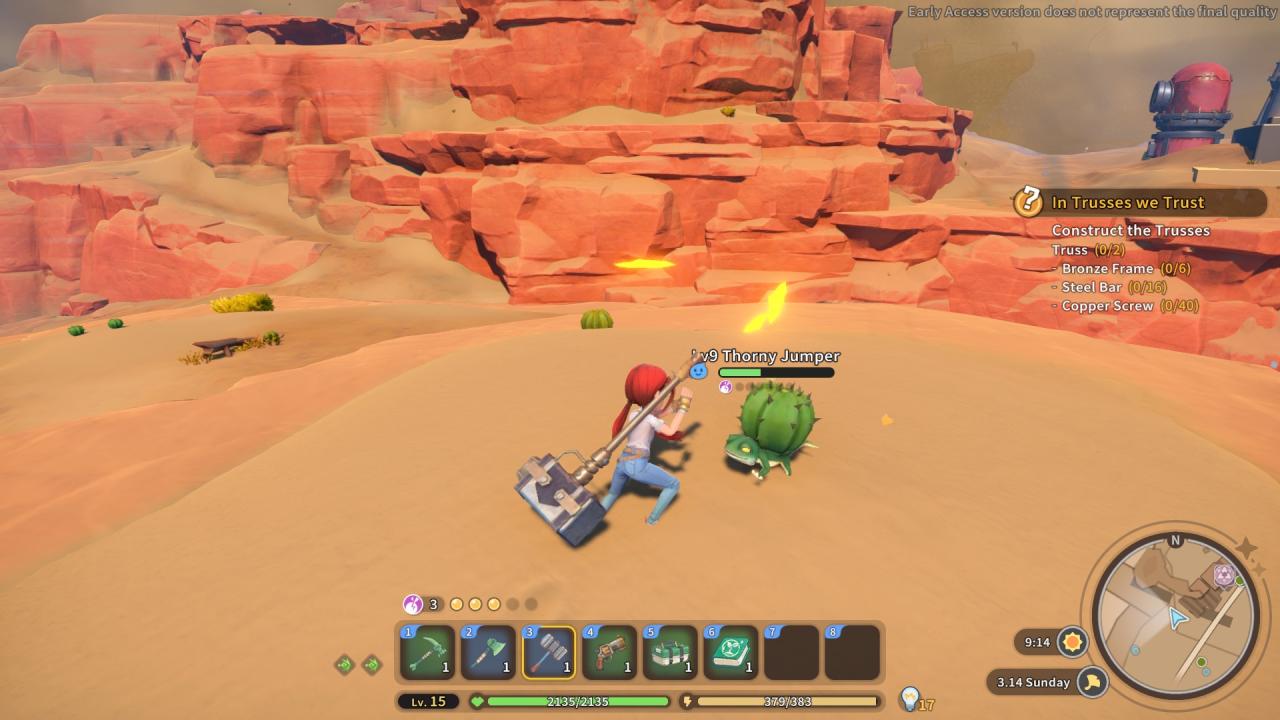My time at sandrock basic leather – In My Time at Sandrock, basic leather plays a pivotal role in crafting, building, and decorating. This guide will delve into the significance of basic leather, its uses, and advanced techniques to enhance its versatility. Embark on a leatherworking journey that will transform your Sandrock experience.
My Time at Sandrock Basic Leather
Basic leather is a fundamental material in My Time at Sandrock, a post-apocalyptic crafting and life simulation game. It serves as a versatile resource with a wide range of uses and applications within the gameplay.
Crafting and Construction
- Tools and Equipment:Basic leather is essential for crafting various tools and equipment, such as satchels, backpacks, and belts, which are crucial for carrying items and organizing inventory.
- Building Materials:It can also be used to create building materials like leather roofs, awnings, and furniture, providing both durability and aesthetic appeal to structures.
- Clothing and Armor:Basic leather is a primary material for crafting clothing and armor, offering protection and customization options for the player character and their companions.
Trading and Economy
- Currency:Basic leather serves as a valuable currency within the game’s economy. It can be traded with other characters for goods, services, and resources.
- Crafting Materials:It can be further processed into refined leather, which is a higher-tier material used in crafting more advanced items.
- Questing and Reputation:Completing quests and assisting NPCs often involves gathering or using basic leather, contributing to the player’s reputation and progression.
Crafting Basic Leather
Crafting basic leather in My Time at Sandrock is a fundamental skill for creating various items, such as clothing, furniture, and tools. The process requires specific materials and tools, and involves several steps to transform raw materials into usable leather.
Materials and Tools
- Raw Hide: Obtained from hunting animals.
- Tanning Agent: Purchased from General Store or crafted using Wood Chips and Water.
- Tanning Vat: Used to soak the hide in the tanning agent.
li>Knife: Used to cut and shape the leather.
Crafting Process
Step 1: Soaking the Hide
Place the raw hide in the tanning vat filled with the tanning agent. The hide should be fully submerged and left to soak for several in-game days, depending on the size of the hide.
Step 2: Drying the Hide
Once the hide is tanned, remove it from the vat and hang it to dry. It takes several in-game days for the hide to dry completely.
Step 3: Cutting and Shaping
Use a knife to cut the dried hide into desired shapes and sizes. This step requires precision and care to ensure the leather pieces are suitable for the intended purpose.
Step 4: Finishing
The basic leather is now ready to use. It can be further processed by dyeing, polishing, or adding embellishments to enhance its appearance and durability.
Using Basic Leather
Basic leather, a fundamental material in My Time at Sandrock, finds myriad uses in various aspects of the game. From crafting essential items to enhancing the aesthetics of your surroundings, this versatile material plays a pivotal role in shaping your experience.
Building and Crafting
Basic leather serves as a key component in constructing numerous structures and crafting essential tools. It is utilized in the creation of:
- Workbenches: Essential for crafting and repairing items, workbenches require basic leather for their construction.
- Storage chests: These chests provide ample space for storing your valuable resources, and their construction involves the use of basic leather.
- Farming tools: Basic leather is indispensable for crafting farming tools such as hoes and watering cans, enabling you to cultivate crops and sustain your workshop.
Decorating
Beyond its practical applications, basic leather also adds a touch of style and comfort to your living spaces. It is used in the creation of:
- Chairs and sofas: These furniture pieces provide comfortable seating options, and their upholstery often incorporates basic leather.
- Curtains and rugs: Basic leather can be employed to craft curtains and rugs, enhancing the ambiance of your home with its warm and inviting texture.
- Wall decorations: Basic leather can be used to create unique and eye-catching wall decorations, adding a personal touch to your living space.
Examples of Items, My time at sandrock basic leather
Here are a few specific examples of items that can be crafted using basic leather:
- Leather armor: Provides protection against physical attacks.
- Leather backpack: Increases your inventory capacity.
- Leather saddle: Enhances your mount’s speed and comfort.
- Leather book cover: Protects your valuable books from damage.
- Leather tool pouch: Keeps your tools organized and easily accessible.
Advanced Leatherworking Techniques

Advanced leatherworking techniques allow artisans to enhance the appearance and functionality of basic leather. These techniques include dyeing, stamping, and embossing, each with unique applications and aesthetic effects.
Dyeing
Dyeing involves applying pigments or dyes to leather to alter its color. This technique can create a wide range of hues, from subtle tints to vibrant shades. The choice of dye depends on the desired effect, the type of leather, and the intended use.
To effectively apply dye, it is important to prepare the leather by cleaning and conditioning it. The dye should be applied evenly using a brush or sponge, and allowed to penetrate the leather. After dyeing, the leather should be sealed with a finish to protect the color and enhance its durability.
Stamping
Stamping involves using heated or unheated stamps to imprint designs or patterns onto leather. This technique can create intricate details, logos, or lettering. The stamps can be made of various materials, including metal, wood, or rubber.
To effectively stamp leather, it is important to use the correct temperature and pressure. The stamp should be applied firmly and evenly to ensure a clear impression. After stamping, the leather can be stained or dyed to highlight the design.
Embossing
Embossing involves creating raised or recessed designs on leather using pressure and heat. This technique can create a variety of textures, from subtle patterns to bold relief sculptures. Embossing can be done using a variety of tools, including embossing plates, stamps, and molds.
To effectively emboss leather, it is important to use the correct pressure and heat. The leather should be dampened to make it more pliable and allow the design to be impressed more easily. After embossing, the leather can be finished with dyes or stains to enhance the design.
Tips for Efficient Leather Production
Optimizing leather production in My Time at Sandrock requires a combination of resource management, automation, and strategic planning. By implementing these tips, players can increase their leather output and streamline their production process.
Gathering Materials Efficiently:
- Identify resource-rich areas on the map and establish gathering routes to maximize yield.
- Use tools like the Pickaxe and Sickle to harvest resources quickly and efficiently.
- Consider using Resource Nodes to automate resource gathering and free up time for other tasks.
Managing Resources Wisely:
- Set up dedicated storage facilities to organize and track leather and other resources.
- Prioritize resource allocation based on production needs and market demand.
- Consider using spreadsheets or online tools to track resource usage and identify areas for improvement.
Maximizing Output:
- Invest in upgrades for workshops and equipment to increase production speed and quality.
- Hire additional workers and assign them to specific tasks to increase overall output.
- Use automation tools like Conveyor Belts and Workstations to streamline the production process and reduce manual labor.
Automating Production:
- Utilize Conveyor Belts to transport materials and products between workstations automatically.
- Implement Workstations to assign specific tasks to workers, reducing the need for manual intervention.
- Consider using Programmable Logic Controllers (PLCs) to automate complex production processes and optimize resource allocation.
Conclusive Thoughts
Mastering basic leather in My Time at Sandrock empowers you to create unique and functional items. Whether you’re a seasoned leatherworker or just starting your crafting journey, this guide provides valuable insights and tips to elevate your leatherworking skills. Embrace the art of leathercraft and unlock the full potential of Sandrock’s crafting system.
FAQ Insights: My Time At Sandrock Basic Leather
What is the primary use of basic leather in My Time at Sandrock?
Basic leather is essential for crafting various items, including furniture, clothing, and building materials.
How do I craft basic leather in My Time at Sandrock?
To craft basic leather, you will need animal hide, a tanning rack, and salt. The tanning process takes several in-game days.
What are some advanced leatherworking techniques in My Time at Sandrock?
Advanced techniques include dyeing, stamping, and embossing, allowing you to customize and enhance the appearance of basic leather.

